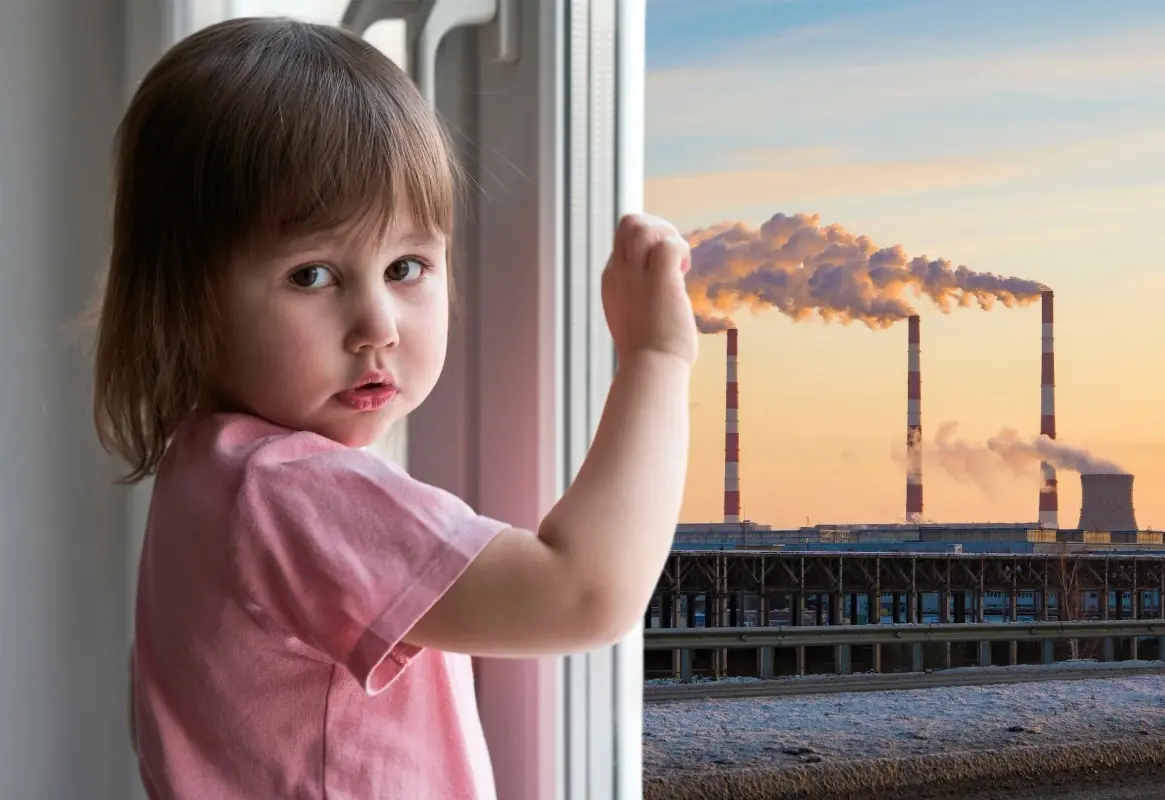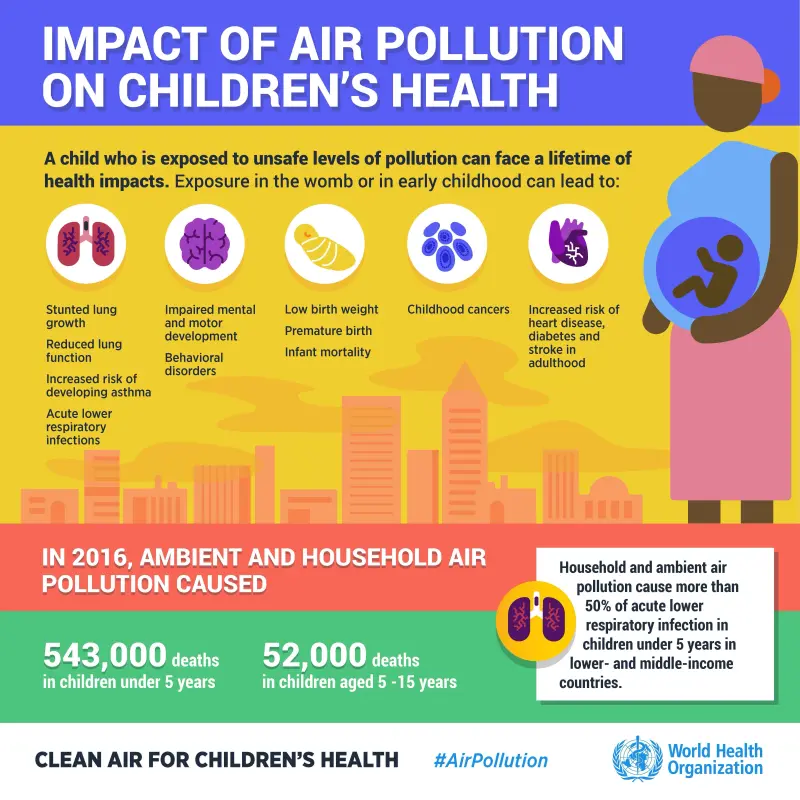
Highly urbanized cities are highly concerned with the direct connection between air quality and kids' health. It is crucial for us to know how pollution can affect our kid's lives, as it greatly influences their welfare and development. In this connection, a child can be affected by poor air in various ways, such as respiratory problems and brain damage. That’s why being aware of the kind of air around your kid remains vital as a parent. This introduction will examine why monitoring the air matters and its impacts on the health of our youngest generation.

Several harmful substances in the atmosphere cause contamination and pose great risks to kids' health. Understanding these pollutants and where they come from is necessary to reduce their impact on young people.
Air contains particulate matter (PM), nitrogen oxides (NOx), ozone (O3) and hydrocarbons as the major pollutants. Motor vehicle emissions, industrial discharges, construction activities and natural sources like dust, pollen and plants are among their origins.
These chemicals can negatively affect kids' health in several ways. They can infiltrate deep into the lungs, causing respiratory infections and deteriorating asthma while withering lung development. Some pollutants go through the circulatory system, thereby posing a risk of heart attacks and strokes. Prolonged exposures may also affect neurodevelopmental processes and cognition, which can lead to changes in behavior in children. In addition, such exposure weakens immunity systems, making this age group prone to infections that often become allergies.
It is important to know where these atmospheric pollutants come from and what they do when released into the atmosphere in order to protect kids' health through emission reduction policies that improve atmospheric property standards.

Poor air property has a severe effect on multiple dimensions of children’s health, making various conditions worse and influencing their mental conditions.
The most common respiratory diseases in kids include asthma, bronchitis, and allergies. These are brought about by atmospheric contamination, which includes particles, nitrogen oxides, and ozone that enter the lungs, leading to respiratory infections and worsening asthma. Asthma is highly prevalent where there are high levels of contamination due to urbanization.
Besides physical impacts on health, a bad atmosphere is likely to interfere with the psychological wellness of youngsters. Continuous exposure to a polluted atmosphere can lead to stress and fatigue, which can possibly impact the moods and behaviors of children generally. Furthermore, some studies reveal that air pollution might impair cognitive functions, thereby hindering learning ability in long-term exposed kids.
These effects show why monitoring the property's atmosphere matters so much if we want to ensure that kids remain healthy and safe.

Due to their still-growing respiratory tracts and higher breathing rates per kilogram of body weight, infants and preschool-aged kids are very sensitive to the poor quality of the atmosphere. They are more prone to lung ailments like respiratory tract infections, which are being caused by pollutants such as nitrogen oxides or particulate matter.
Youngsters who already have asthma or bronchitis, for instance, suffer the most. Poor air quality makes their symptoms worse; hence, they experience frequent, intense asthma attacks and respiratory distress. These kids need special attention in polluted areas to manage their conditions.
These kids living in urbanized industrial areas are exposed to high levels of pollutants originating from vehicle smoke emissions and industrial discharges, among other sources. This leads to high contamination levels that can cause health issues like respiratory problems and heart diseases, as well as possible long-term impacts on cognitive development due to factors such as population density and traffic congestion.
Understanding the vulnerability of these groups underscores the significance of targeted interventions and policies aimed at reducing air pollution overall while safeguarding the health of all kids, particularly those most at risk.

Air property improvement for protecting kids' health involves enacting laws and individual defensive measures to minimize exposure to harmful pollutants.
Efficient atmosphere quality management depends on strong legislation, which establishes regulations and standards regarding air property. These standards regulate the amount of pollution that industries, vehicles, and other sources should emit. Collaborative initiatives to reduce pollution levels also encourage the adoption of clean technology and efficient energy utilization. Additionally, government grants for renewable energy use and the promotion of sustainable transport provision can aid in reducing emissions, hence enhancing air quality in areas where children live or play.
Protection at the personal level can help alleviate the effects of poor air quality on children. Indoor pollutant levels might be reduced using home or school air purifiers to provide cleaner breaths for children. In cases where a child has to be outside, masks, particularly those designed for filtering particulate matter, can be useful in areas with increased pollution levels. Other mitigation measures include shifting outdoor activities from peak-contamination hours or days, creating green spaces, and conducting tree planting programs for kids’ safety from environmental contaminants.
Through a combination of legislative efforts and individual protective actions, communities can strive towards ensuring clean air for children, leading to improved respiratory health, thereby contributing to overall well-being gains among them.
First things come first, and one of these is protecting children's health against air pollution. There is a need to regularly evaluate how healthy your home’s air is so that you can protect yourself as well as those you love. Like the Milerd Aero Q8, which is an innovative portable testing air quality in your home with a rechargeable battery provision, it ensures people assess contaminants in the atmosphere even while on the move. It immediately senses tiny particles and updates you on the state of your surroundings. Therefore, if you buy devices like the Milerd Aero Q8, you possess vital information required for maintaining healthy indoor air while securing lives closer to you.